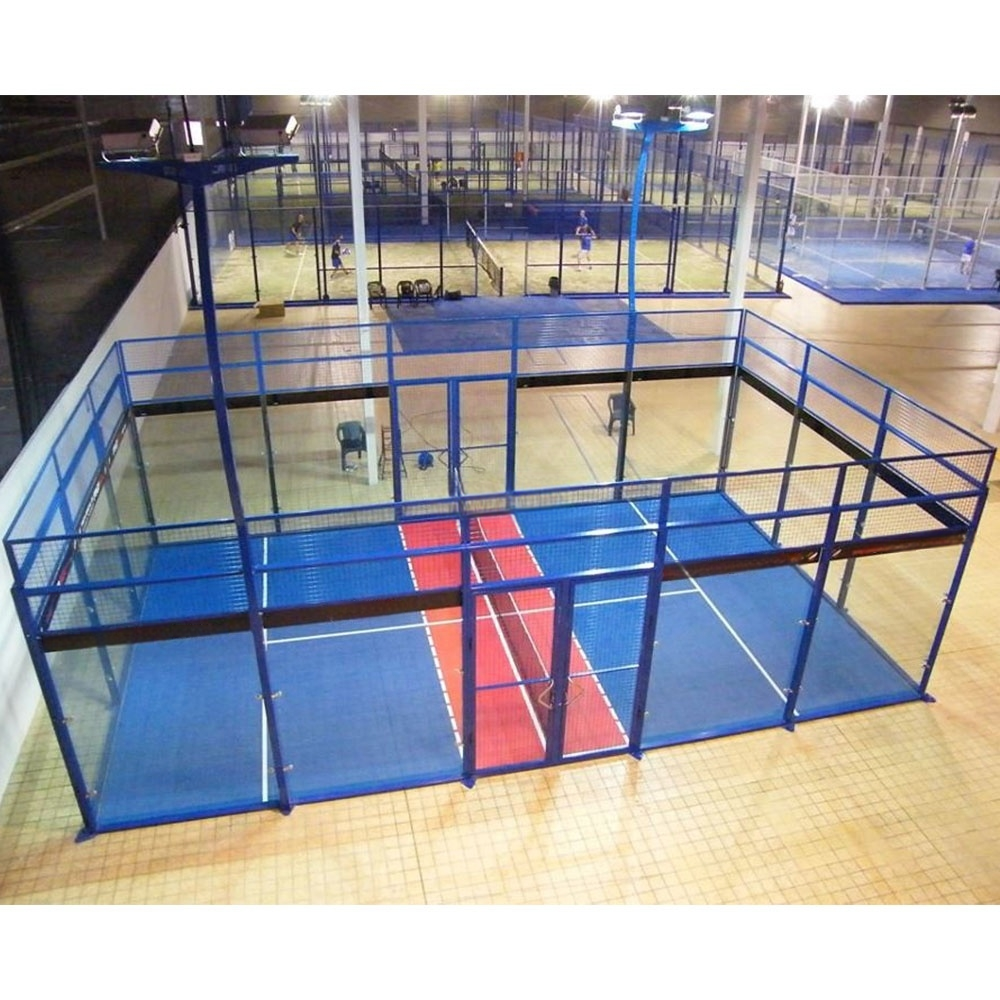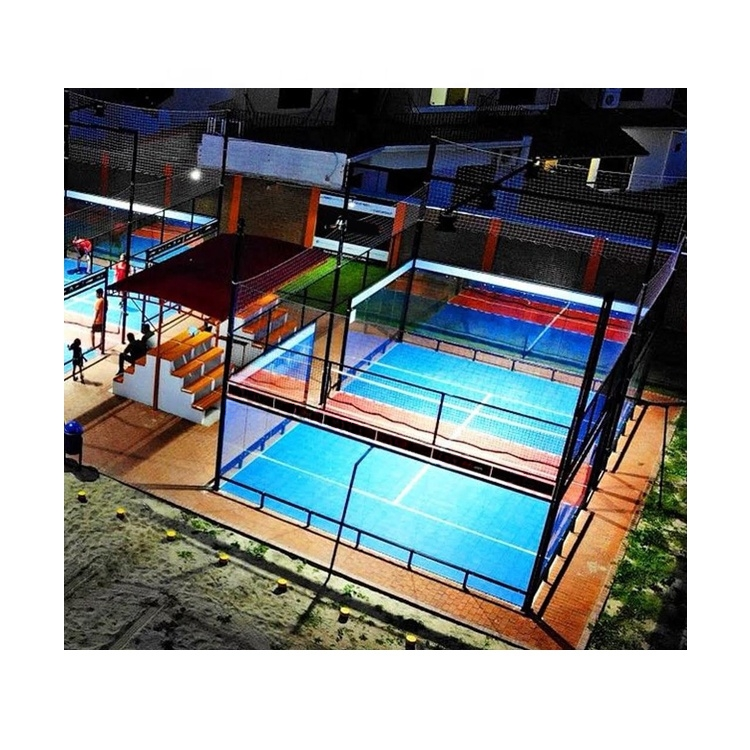Essential Guidelines for Creating Competition-Grade Padbol Facilities
The rising popularity of padbol has created increasing demand for high-quality courts where enthusiasts can enjoy this dynamic fusion of football and padel. Building a professional padbol court requires careful planning, precise execution, and adherence to official specifications to ensure both optimal gameplay and long-term durability. This comprehensive guide will walk you through the essential aspects of constructing a padbol court that meets international standards while providing years of reliable service.
Court Design and Specifications
Dimensional Requirements
A regulation padbol court must follow specific measurements to ensure standardized gameplay. The court dimensions should measure 10 meters in length and 6 meters in width, with walls reaching a height of 4 meters. The playing surface requires careful consideration of both the synthetic turf and the underlying foundation to maintain consistent ball bounce and player safety.
The perimeter structure consists of tempered glass panels and metallic mesh, creating a perfect balance between transparency and durability. These materials must be installed with precision to withstand the impact of regular play while maintaining their structural integrity over time.
Surface Materials and Installation
The playing surface of a padbol court requires specialized synthetic turf designed specifically for this sport. The artificial grass should have a pile height between 10-12mm and feature a sand infill system that provides optimal ball response and player traction. The installation process must ensure even distribution of the infill material and proper securing of turf seams to prevent separation during intense gameplay.
Beneath the synthetic turf, a properly engineered base system is crucial. This typically includes layers of compacted aggregate and shock-absorbing materials to provide consistent ball bounce and reduce player fatigue. The drainage system must be carefully integrated to prevent water accumulation and extend the court's lifespan.

Structural Components and Assembly
Framework and Support Systems
The structural framework of a padbol court must be engineered to withstand both regular play and environmental factors. Heavy-duty steel or aluminum supports form the backbone of the court, with precision-welded joints and reinforced corner sections. The frame must be properly anchored to the foundation using heavy-duty fasteners and mounting plates to ensure stability.
Proper installation of the support system requires careful attention to level and plumb conditions. Each vertical post and horizontal beam must be perfectly aligned to support the glass panels and maintain proper ball rebound characteristics. Anti-vibration components should be incorporated to minimize noise and enhance structural longevity.
Glass Panel Integration
The tempered glass panels used in padbol court construction must meet specific safety and performance standards. These panels, typically 12mm thick, are specially treated to resist impact and prevent dangerous shattering. The installation process requires precise spacing and secure mounting to the framework while maintaining proper alignment for seamless gameplay.
Special attention must be paid to the sealing system between glass panels and the supporting framework. High-quality gaskets and weatherproof sealants ensure protection against moisture infiltration while allowing for thermal expansion and contraction of materials.
Lighting and Additional Features
Illumination Requirements
Professional padbol courts require carefully planned lighting systems to ensure optimal visibility during both day and night play. LED fixtures should be positioned to provide uniform illumination across the entire playing surface, typically achieving a minimum of 500 lux for recreational play and 750 lux for tournament conditions.
The lighting layout must minimize shadows and glare while maintaining energy efficiency. Fixtures should be weather-resistant and mounted securely to prevent vibration during play. Consider incorporating automated controls for different lighting scenarios and energy management.
Accessory Installations
Additional features enhance the functionality and user experience of a padbol court. Entry doors should be positioned according to official regulations and equipped with high-quality hardware for smooth operation. Score display systems, if included, must be properly integrated into the court structure without interfering with gameplay.
Consider installing specialized cleaning access points and maintenance platforms to facilitate regular upkeep of the court. These features should be discreetly integrated while remaining easily accessible to maintenance personnel.
Maintenance and Longevity Considerations
Regular Maintenance Protocols
Implementing a comprehensive maintenance program is crucial for extending the life of a padbol court. Regular inspection of structural components, cleaning of playing surfaces, and monitoring of drainage systems help prevent deterioration and maintain optimal playing conditions. Develop a schedule for routine maintenance tasks including turf brushing, glass cleaning, and hardware tightening.
Training facility staff in proper maintenance procedures ensures consistent care and early detection of potential issues. Document all maintenance activities and keep detailed records of inspections and repairs for warranty purposes.
Long-term Protection Measures
Investing in protective measures during construction pays dividends in long-term durability. UV-resistant materials, proper drainage systems, and quality weatherproofing elements help shield the padbol court from environmental damage. Consider installing additional features such as wind screens or climate control systems in exposed locations.
Establish partnerships with qualified maintenance providers and keep an inventory of essential replacement parts to minimize downtime when repairs are needed. Regular professional assessments can help identify and address potential issues before they become significant problems.
Frequently Asked Questions
What is the typical cost range for building a professional padbol court?
The cost of constructing a professional padbol court typically ranges from $30,000 to $50,000, depending on location, materials chosen, and additional features. This investment includes the basic structure, playing surface, lighting system, and essential safety features. Additional customizations or premium materials can increase the total cost.
How long does it take to complete a padbol court installation?
A professional padbol court installation usually takes between 2-3 weeks from ground preparation to final completion. This timeline can vary based on factors such as weather conditions, site accessibility, and the complexity of additional features being installed. Proper planning and coordination with experienced contractors can help ensure efficient project execution.
What type of foundation is required for a padbol court?
A padbol court requires a stable, level foundation typically consisting of a reinforced concrete slab with a minimum thickness of 15cm. The foundation must include proper drainage provisions and be engineered to support the court structure while preventing settlement or movement. Soil conditions and local building codes will influence specific foundation requirements.

